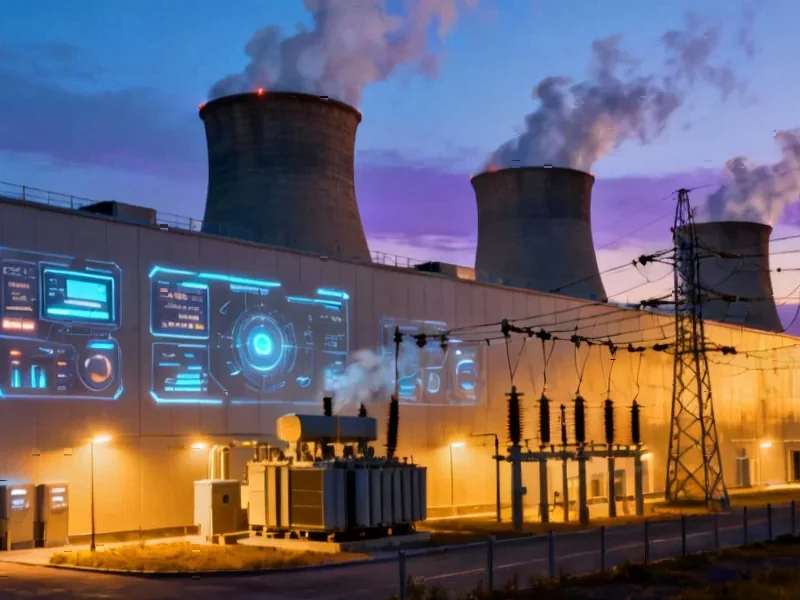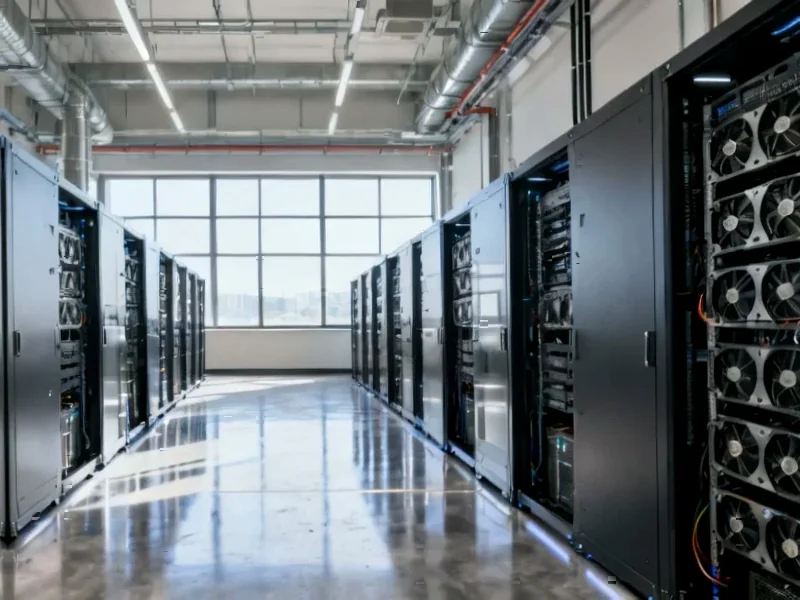According to DCD, Microsoft has signed a $9.7 billion, five-year agreement with Iren to access the company’s Nvidia GB300 GPUs, with Microsoft providing 20 percent in prepayment. The GPUs will be deployed at Iren’s data center campus in Childress, Texas, in phases through 2026, with liquid-cooled data centers making up 200MW of the campus’s total 750MW capacity. Iren, formerly known as Iris Energy, is transitioning from cryptocurrency mining to AI cloud services and currently operates approximately 23,000 GPUs across its North American facilities. The deal represents part of Microsoft’s broader strategy of securing compute capacity through third-party providers, following similar agreements with companies like CoreWeave and Lambda estimated to total around $33 billion. This massive commitment signals a fundamental shift in how hyperscalers are approaching AI infrastructure.
The Hyperscaler Capacity Crunch
Microsoft’s aggressive move reveals the uncomfortable truth facing all major cloud providers: even the deepest pockets can’t build AI infrastructure fast enough to meet demand. The company’s recent earnings call highlighted $11.1 billion spent on data center leases in a single quarter, demonstrating that traditional build-out models are insufficient for the AI boom. What makes this deal particularly strategic is Microsoft’s willingness to partner with a former cryptocurrency miner – a company that brings specialized expertise in high-density computing and power management but lacks the enterprise customer base Microsoft commands. This represents a new era of infrastructure specialization where different players focus on what they do best rather than attempting vertical integration across the entire stack.
Power: The New Strategic Currency
Iren’s 3GW secured power portfolio across North America represents the real prize in this arrangement. As AI models grow exponentially more power-hungry, access to reliable, scalable electricity has become the primary constraint on growth. The transition to liquid-cooled data centers for high-density GPU deployments isn’t just a technical upgrade – it’s a fundamental requirement for operating at the scale Microsoft needs. What’s particularly telling is that Iren is simultaneously investing $5.8 billion in additional GPUs and equipment from Dell, suggesting they’re building out capacity specifically for this partnership. This creates a virtuous cycle where Microsoft secures capacity without capital expenditure, while Iren gains the revenue certainty needed to fund expansion.
The Rise of Specialized Infrastructure Providers
We’re witnessing the emergence of a new class of infrastructure companies that sit between hardware manufacturers and cloud providers. Companies like Iren, CoreWeave, and Lambda are building specialized GPU clusters optimized for AI workloads, then leasing capacity to hyperscalers who handle the customer-facing services. This division of labor makes economic sense – the infrastructure providers can focus on operational excellence and power management, while Microsoft concentrates on software, services, and customer relationships. The Nvidia GB300 platform represents the cutting edge of AI acceleration, and securing access to these systems has become a competitive necessity for any company hoping to remain relevant in the AI landscape.
Broader Industry Implications
This deal signals three major shifts that will define the next decade of cloud computing. First, we’re moving from general-purpose cloud to specialized AI infrastructure as the primary growth driver. Second, power availability and cooling technology have become strategic differentiators rather than operational concerns. Third, the line between competitor and partner is blurring as even dominant players like Microsoft acknowledge they can’t do everything themselves. The $9.7 billion commitment over five years suggests Microsoft anticipates sustained demand for AI compute that exceeds what they can build internally, and they’re willing to pay a premium to ensure they don’t get left behind in the AI arms race.
What Comes Next
Looking ahead 12-24 months, expect to see more of these mega-deals as hyperscalers scramble to lock in GPU capacity ahead of competitors. The shortage isn’t temporary – we’re in the early innings of enterprise AI adoption, and demand will only accelerate as more companies move from experimentation to production deployment. The companies controlling GPU access and power capacity will enjoy unprecedented pricing power, while traditional data center operators without AI specialization may struggle to compete. Microsoft’s bet on Iren represents a pragmatic recognition that in the AI era, sometimes the fastest way to scale is to partner with specialists who’ve already solved the hardest infrastructure challenges.




